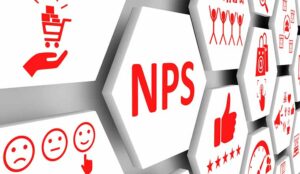Elizabeth Magill at Cyara questions if you are ready for the future of CX metrics.
When it arrived nearly 20 years ago, the Net Promoter Score (NPS) was revolutionary in its simplicity. It offered a clear, succinct and straightforward way to measure customer experience (CX). Gathering data was easy, and it required very little on the part of customers.
Because of its simplicity, the NPS has become a foundational metric for measuring CX. Businesses in nearly every industry use it to determine how well they’re delivering customer service, and it’s become a shorthand for CX success or failure.
But the simplicity of the NPS also creates significant limitations, and it falls short when businesses use it as the sole measuring stick for CX.
Ultimately, it only tells you one part of the story. Accurately measuring your CX takes much more. Let’s look at the role NPS plays in your business — and what else you need to do to get a complete picture of customer experience.
Net Promoter Score: The Basics
A Net Promotor Score is the measure of how likely your customers are to promote your business. The process for measuring this is extraordinarily simple.
Through a basic survey — usually delivered right after a customer completes a transaction — you ask a customer something along the lines of “On a scale of 0 to 10, how likely are you to recommend our company?” The scale for evaluating answers breaks down as follows:
- 0–6 — Detractor
- 7–8 — Passive
- 9–10 — Promoter
The actual NPS for your business is measured as the percentage of promoters minus the percentage of detractors. Consider a business with the following scores:
- 25 scores between 0 and 6 (25% of total)
- 15 scores between 7 and 8 (15% of total)
- 60 scores between 9 and 10 (60% of total)
That business would have an NPS score of 35 (60% minus 25%). As you can see, it’s also possible to have a negative score if the proportion of detractors is greater than the proportion of promoters. Thus, NPS scores can range from -100 to 100.
Benefits of NPS for Your Business
As we’ve alluded to already, the advantages of NPS lie in its simplicity. With one question, you can gauge a powerful aspect of customer sentiment. No long surveys. No cumbersome process for tallying and measuring results. Getting customers to participate and tallying the results couldn’t be easier.
Not only that, but the data you gather to measure your NPS can connect you with your strongest advocates. You can then find ways to leverage and bolster that loyalty. Since strong brand advocates make some of your best marketers, this is a powerful marketing tool.
Finally, these simple surveys make it easy to follow up with detractors. When someone says they’re unlikely to promote your business, you can reach out to discover what they didn’t like and how you can do better. In that way, the NPS can be a great tool for CX improvement.
Where NPS Falls Short
Despite its usefulness, though, your NPS is not a good stand-alone metric for your business. Relying on it as a single source of truth can lead to some faulty assumptions and glaring holes in how you measure your CX.
In a study published by Harvard Business Review, conducted by research and consulting firm C Space, researchers found dissonance between what customers said they were likely to do and what they actually did.
Instead of merely asking how likely they were to promote a brand, the study also asked if they actually had recommended that brand or discouraged someone from choosing it.
In many cases, the two didn’t line up. For instance, although only 50% of the customers qualified as promoters according to the NPS question, 69% of them had actually promoted the brands in the survey. That means the NPS survey was misclassifying a significant number of promoters as either passives or detractors.
Even worse, though, is that the NPS system can’t account for human complexity. Consider that 52% of people who had actively discouraged someone away from a brand had also actively promoted it to others. Why? Because people consider many factors when making recommendations to others.
Here, the Net Promoter Score’s simplicity is its Achilles’ heel. Without any follow-up questions, you can’t get a clear picture of why your customers answered the way they did. So, even if you can get a decent idea of the proportion of promoters and detractors you have, it’s not very clear how to improve that ratio.
A Good Way: Conduct Customer Surveys
When assessing customer satisfaction, you have to weigh the trade-off between simplicity and depth. In some cases, you simply need more than what NPS can give you. And more expansive customer surveys are a good way to dig deeper into customer sentiment.
On one hand, even basic NPS follow-ups can be helpful and place minimal demands on your customers. When someone answers with a detractor score, for instance, you can send an automated reply thanking them for their feedback and asking how you can improve their experience.
You can go further, though, and target specific objectives with customer surveys. Design surveys with questions that assess particular aspects of customer experience, such as user interface, product feedback, or their experience with a service representative.
If you design your surveys well — and provide strong incentives for customers to take them — they can provide an invaluable source of CX insights.
A Better Way: Monitor Your CX Systems
Still, even well-designed surveys have their limitations. Some customers will avoid them no matter what reward you offer, and many won’t answer with the depth or forthrightness you’re hoping for. To go even deeper, you need real-time insights.
In other words, are you equipped to measure what your customers are experiencing when they interact with your business? Surveys capture sentiment after the fact, but that’s not always the most accurate representation of what happened. This is where you need methods and tools in place for assessing customer experiences before problems occur.
Continuous monitoring of every touchpoint in the customer’s journey will provide greater visibility into the complete customer journey.
In a call centre, for example, where is there poor call quality? Which IVR menus aren’t functioning correctly? Where are you having chatbot issues? Where are customers dropping calls?
Functional and regression testing can also help you to test out CX changes before they go live, ensuring they meet your expectations.
The Future of CX Metrics
NPS scores likely aren’t going anywhere, and they’ll continue to play a role in assessing customer experience. But they are becoming a smaller piece of an increasingly complex puzzle. To truly evaluate the CX you’re delivering, you need to supplement NPS with methods that delve deeper.
With today’s digital tools, it’s possible to measure CX in spectacular detail. These real-time insights give you a live view of what your customers are experiencing.
But they also provide you with a treasure trove of valuable data that you can use not only to evaluate, but to predict customer responses. That’s the future of CX metrics, and businesses would do well to prepare their systems and processes now.
Author: Guest Author
Published On: 26th Apr 2022
Read more about - Guest Blogs, Cyara















